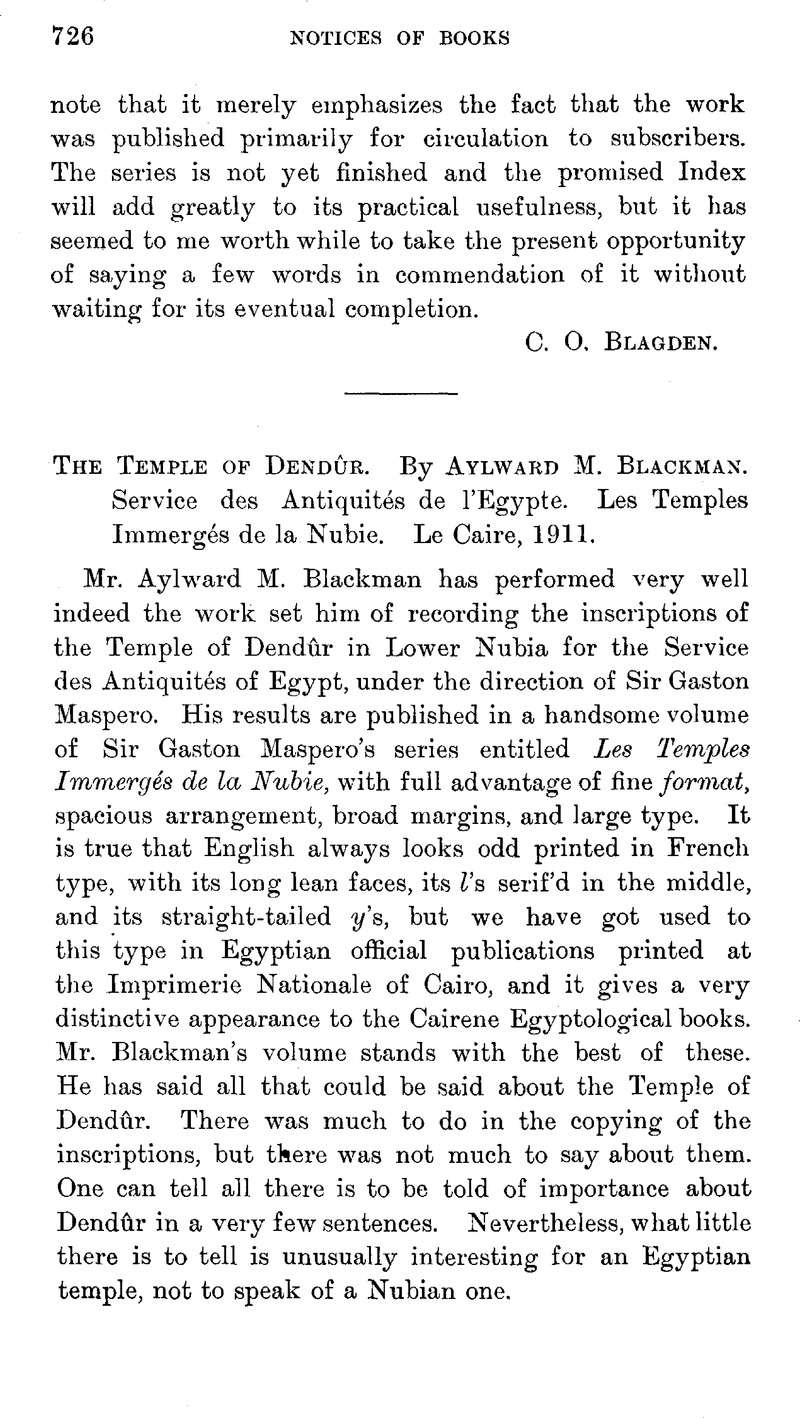No CrossRef data available.
Article contents
The Temple of Dendûr. By Aylward M. Blackman. Service des Antiquités de l'Egypte. Les Temples Immergés de la Nubie. Le Caire, 1911.
Published online by Cambridge University Press: 15 March 2011
Abstract

- Type
- Notices of Books
- Information
- Copyright
- Copyright © The Royal Asiatic Society 1913
References
1 Commenting on a title given to one of these “sheykhs”, which would appear to describe him as “the Dweller in the Underworld”, a dead person or Osiris of power in Hades, Mr. Blackman compares the expression iḫwân-na min taḥt el-arḍ, “our brothers beneath the earth,” which he says is often used by the fellaḥîn in speaking of sheykhs (p. 83, n. 4). But I do not see that in the mouth of a modern fellaḥ this need mean anything more than it would mean in that of a modern European; it simply denotes those who are buried in the cemetery. The old Nubian regarded Pihor as a very potent Osiris and god of the Underworld; there can be nothing of this in the very natural expression iḫwân-na min taḥt el-arḍ.




